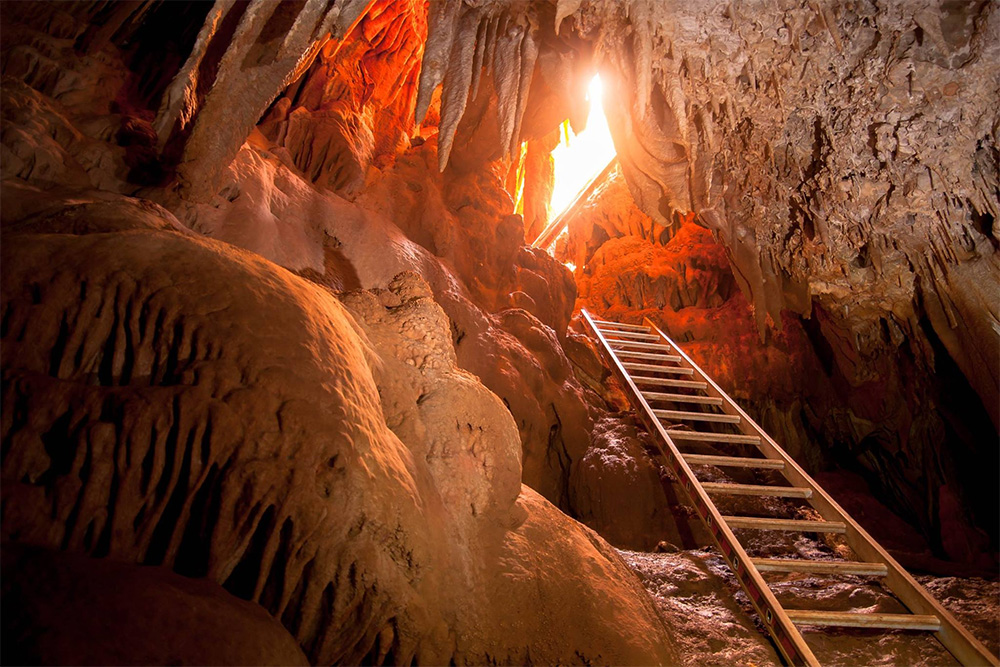Three Crete Caving Experiences Few Travelers Know About
Crete has hundreds of caves not only for speleologists but for travel enthusiasts to discover. Some of the most caves are the Diktaean and Idaean caves, Melidoni, Milatos, Krionerida, and Tigani at Gramvous. However, many other exceptional ones dot the Cretan landscape. Below you’ll find three little-known to outsiders. And if you like myths and legends, there’s even a fairy still dancing inside one of them.
Neraidospilios Cave at Astraki
For those searching for myths and legends, the Neraidospilios Cave at Astraki was once the Temple of Athena Tritogenia. Located in a magnificent gorge outside Heraklion, the spring that flows inside the cave is still one of several water sources for Heraklion and its surroundings. One legend, that of the lyre player and the fairies, the musician so entranced by the deities that he played as they danced above the eternal spring in the cave.
The myth says he became so enamored with one of the fairies that he plotted to capture her, which he eventually did, but rendered her mute in so doing. Then, in a twist of fate, the fairy left the lyre player with their child. The story ends with the fairy mother weeping tears into the spring, making the waters cloudy.
Samonas Cave
Just outside the village of the same name, Samonas Cave is a tiny but imposing place discovered by chance by road builders back in the middle of the 1990s. The inside of the cave is a kaleidoscope of color highlighted by a small pond. Those who wish to visit it must ask for the keys since the entrance remains locked to protect the cave from vandals. You can contact the Mountaineering Club of Chania (EOS) to gain access.
Samonas Cave is a splendid attraction, well worth the time and trouble to visit. The countryside surrounding Samonas is mirific, especially for those choosing to drive themselves. Not far from Samonas, you can get a bonus experience visiting the sacred Minoan Platyvola-Cave. Just ask the club members or the locals.
Gerani Cave
One of Crete’s most beautiful and significant subterranean attractions, the cave of Gerani in Rethymno Prefecture is a must-see. Only seven kilometers outside Rethymnon, the cave is near Kamari, noteworthy for its Neolithic character. Remains of early human inhabitants found here suggest that a Stone Age earthquake trapped them.
Discovered during road work back in the late 1960s, the cave was probably sealed during Neolithic times, which offered researchers a gripping window into the period. Since later stratification was not present, the cave is a kind of time capsule of prehistory. The six chambers of the cave roof are covered in snowy white stalactites, while the floor is made up of stalagmites of fossilized rain. Neolithic “homes” were also discovered inside the cave.





